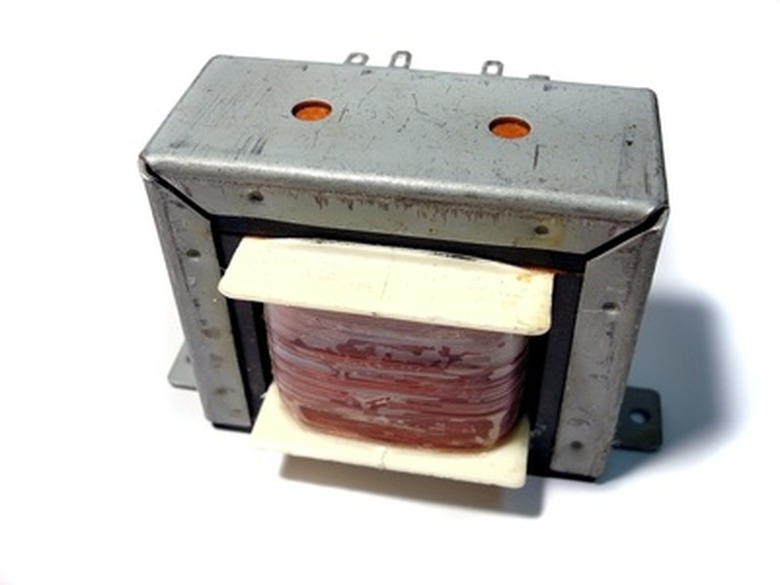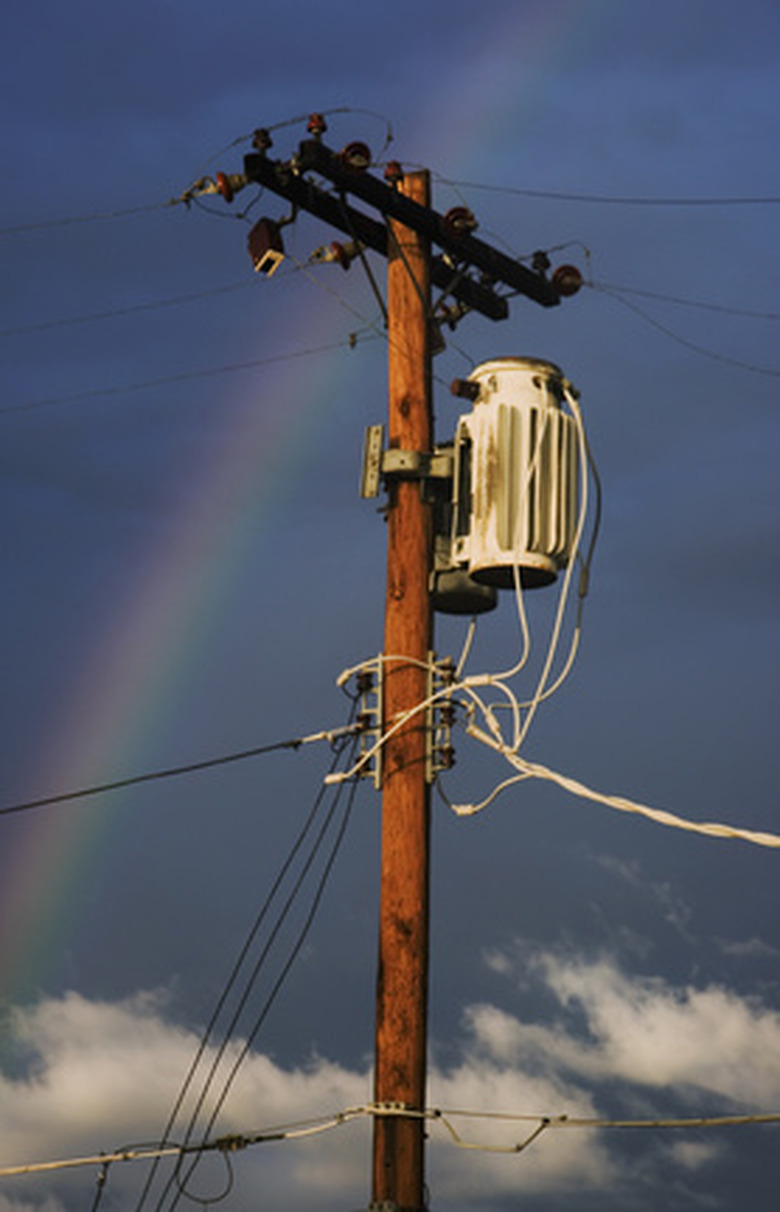How To Calculate Transformer Load
A transformer changes alternating current (AC) voltage from one level to another for power companies, appliances and chargers. But the size of a transformer has little to do with the voltage, and everything to do with the amount of electricity it provides. Electricians and technicians refer to the equipment a transformer powers as its load, be it machinery, appliances or electronic components. The load can be measured in amps, watts or volt/amps. To calculate load, you must understand certain electrical terms and formulas.
Step 1
Inventory all the equipment the transformer powers. Make a list of the components, lights, appliances or machinery that the transformer will operate. Add the amount of current, watts or volt/amps that each draws. There should be a tag or label on all equipment telling the amount of current or power it draws.
Step 2
Convert the power to equivalent values. Arrange the values into two columns on the list. Label the first "current" and the second "watts" or "volt/amps." Use the formula power equals volts times amps, or (P=IE) t, make conversions.
Step 3
Add up the total current in amps for the first column and the watts or volt/amps in the second column. The sums equal the transformer load expressed in the three terms.
Things Needed
- Pen or pencil
- Notepad
TL;DR (Too Long; Didn't Read)
The prefix "milli" means thousandths and "kilo" means thousands. For example, 50 milliamps equals .05 amps, 10 KW means 10,000 watts and 5 KVA means 5,000 volt/amps. Volt/amps and watts actually mean the same thing because wattage equals volts times amps.
Warning
Don't add watts to kilowatts without converting to equivalent values. For example, 10 KW plus 100 watts equals 10.1 KW or 10,100 watts. Don't add amps to watts. Make the conversions first, and only add amps to amps and watts to watts.
References
Cite This Article
MLA
Asmus, Richard. "How To Calculate Transformer Load" sciencing.com, https://www.sciencing.com/calculate-transformer-load-6155036/. 24 April 2017.
APA
Asmus, Richard. (2017, April 24). How To Calculate Transformer Load. sciencing.com. Retrieved from https://www.sciencing.com/calculate-transformer-load-6155036/
Chicago
Asmus, Richard. How To Calculate Transformer Load last modified March 24, 2022. https://www.sciencing.com/calculate-transformer-load-6155036/


